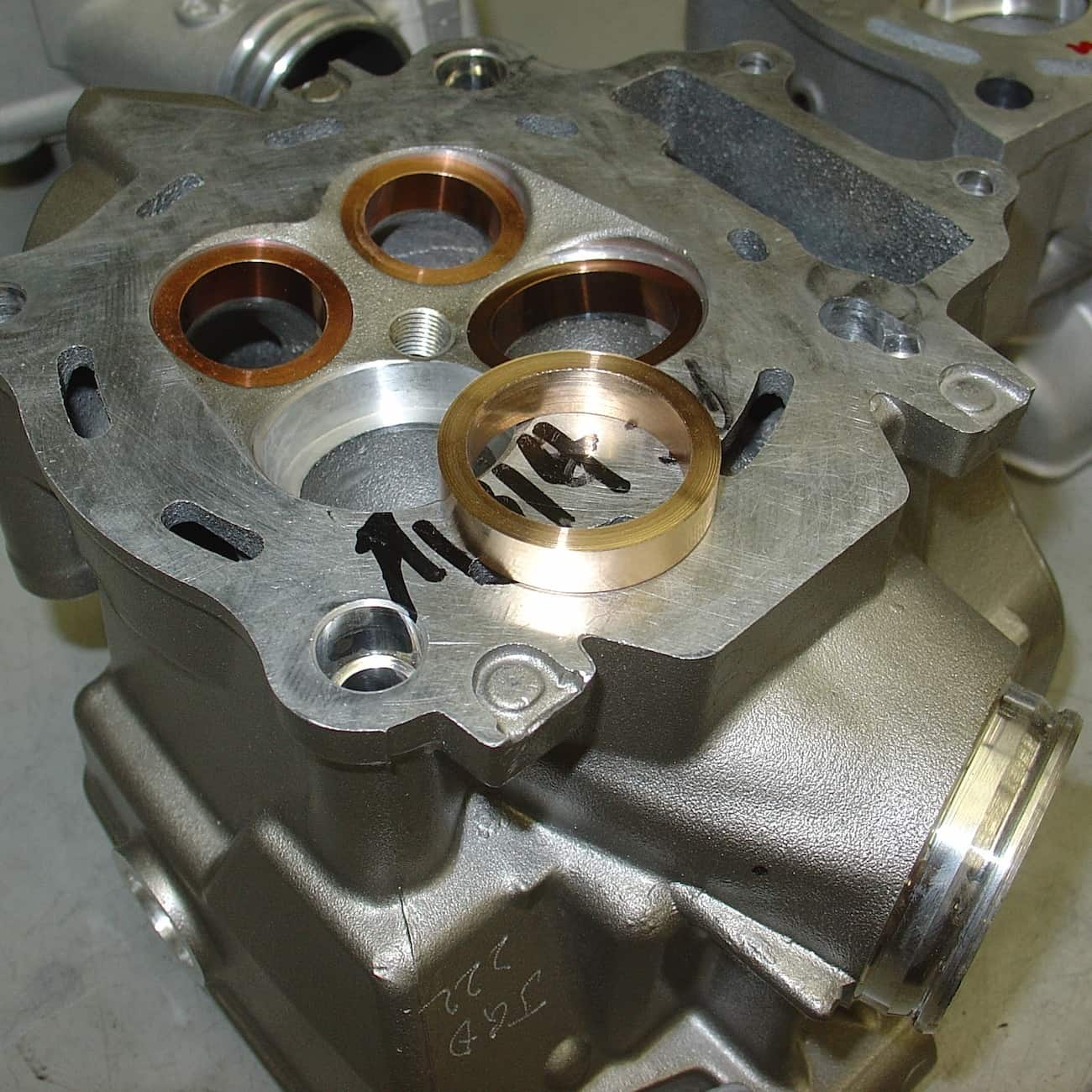ASK THE MXPERTS: THE SYMBIOTIC VALVE AND SEAT PARTNERSHIP
Click on image to enlarge
 Factory bikes don’t run OEM valve seats, they go to copper/berylium.
Factory bikes don’t run OEM valve seats, they go to copper/berylium.
Dear MXA,
Is there any point to replacing valves without replacing the valve seats? I was talking to a guy at the track who told me he was having his valves replaced, and when I asked if he was having his valve seats replaced, he had no idea.
Unless you change your valves at regular intervals, which means before they show excessive wear, it is a good policy to either replace the valve seats or have the old valve seats recut. Valve wear is most noticeable on the valve head’s face. The face is the sealing edge of the valve, and it cups out where it hits against the valve seat. When the valve cups out, it changes the interface against the valve seat. The more the valve cups, the quicker the valve seat wears, and the more dramatic the power loss. On most production motorcycles, the valve seats are 5mm-thick composite iron rings that are countersunk into the combustion dome of the cylinder head. Valve seats can be recut on a Newen machine that recuts them at a 30-degree, then 45-degree and finally at a 60-degree angle. This is called a three-angle valve job. Some performance shops use two more angles following the 60-degree to make a five-angle valve job. For more money, the stock valve seats can be replaced with Ampco 45 or copper/beryllium valve seats. If you are changing the valves, it is good insurance to have the valve seats looked at by a Pro — not Justin Barcia, but a Professional mechanic.
If you have a technical, political, emotion or historical question you want answered, send it to [email protected]





Comments are closed.